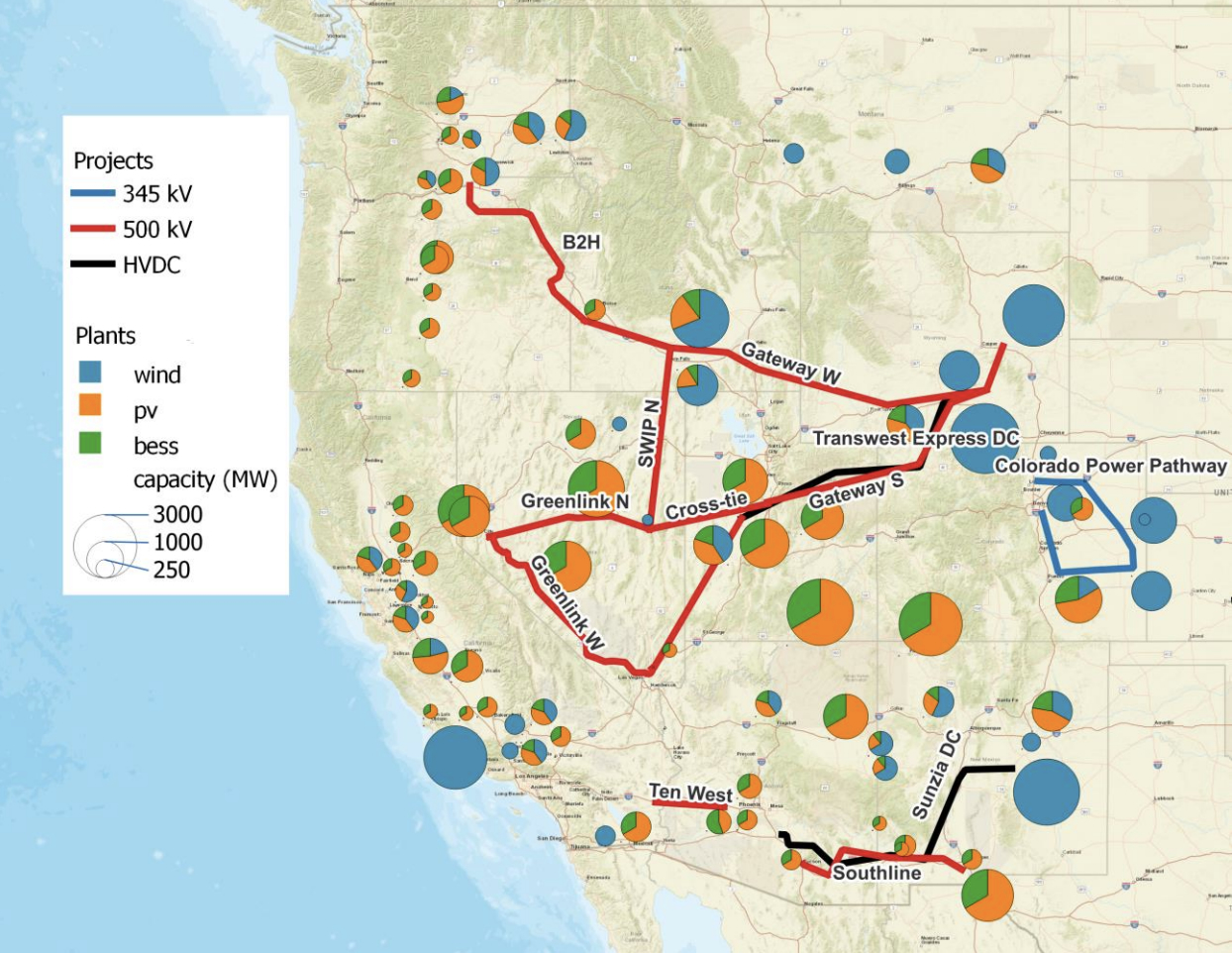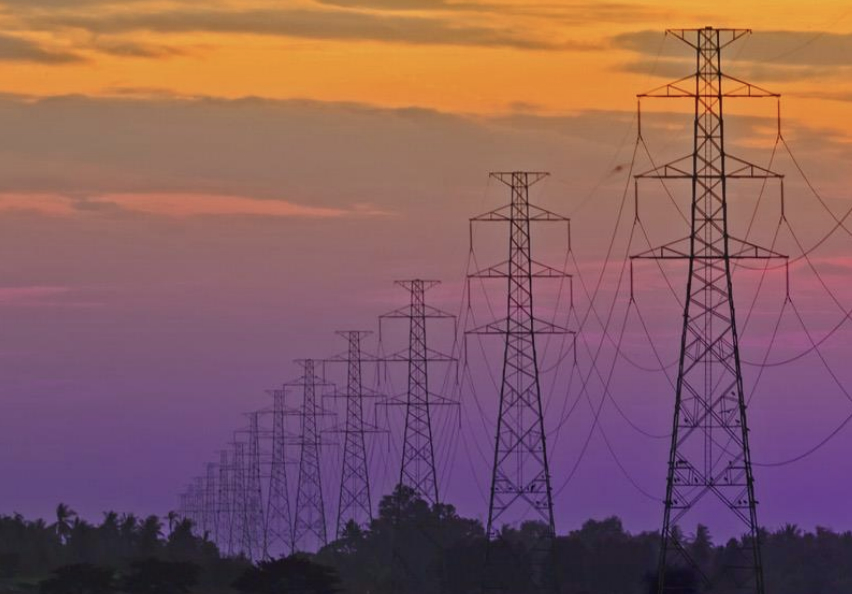Building twelve Western transmission projects that are now at an advanced stage of development and permitting would enable construction of 29 GW of solar, 29 GW of wind and 14.5 GW of energy storage by 2030.
The Pacific Northwest National Laboratory reached that result in a modeling study titled the Western Interconnection Baseline Study, which will serve as input for the U.S. Department of Energy’s forthcoming National Transmission Planning Study.
PNNL developed a “high renewables” scenario by adding solar, wind and storage projects made possible by the new transmission, taking into consideration distance criteria to potential points of interconnection, capacity limits of the 12 transmission projects, and transmission congestion and renewable curtailment limits. Each solar project in the scenario was paired with storage.

Building the additional renewables and storage projects by 2030 would reduce generation operational costs in the West by 32%, PNNL found, while noting that capital costs for generation and transmission were not considered as part of the analysis and would be needed for a complete economic evaluation.
PNNL also found that the high renewables scenario “is resilient enough to withstand selected high-impact contingencies” studied in the analysis, suggesting that the region’s grid “can be operated reliably with a high penetration of renewables.”
National transmission studies
PNNL said that the high renewables scenario establishes a comparative baseline for transmission and generation expansion scenario analyses in the U.S. Department of Energy’s forthcoming National Transmission Planning Study, which is expected to be published by year-end.
DOE previously shared preliminary results from that ongoing study, suggesting that to cost-effectively reach a high level of renewable generation, additional transmission will be needed to connect the wind belt in the central U.S. to eastern grids.
In a separate but similarly-named National Transmission Needs Study, DOE found last October that the U.S. will need to add 54.5 TW-miles of within-region transmission by 2035 under future scenarios with moderate load but high clean energy assumptions, adding that those scenarios represented the most likely power sector future given recently enacted laws.
DOE used that study to propose, last May, ten National Interest Electric Transmission Corridors. A NIETC designation, once final, “unlocks” federal financing and permitting tools to spur construction of transmission projects “to alleviate consumer harms,” DOE said.
DOE “has been heavily focused,” the department said in announcing the PNNL study, on examining how improving transmission and adding renewable energy can lower the cost of energy generation and decrease carbon emissions nationwide.
This content is protected by copyright and may not be reused. If you want to cooperate with us and would like to reuse some of our content, please contact: editors@pv-magazine.com.








By submitting this form you agree to pv magazine using your data for the purposes of publishing your comment.
Your personal data will only be disclosed or otherwise transmitted to third parties for the purposes of spam filtering or if this is necessary for technical maintenance of the website. Any other transfer to third parties will not take place unless this is justified on the basis of applicable data protection regulations or if pv magazine is legally obliged to do so.
You may revoke this consent at any time with effect for the future, in which case your personal data will be deleted immediately. Otherwise, your data will be deleted if pv magazine has processed your request or the purpose of data storage is fulfilled.
Further information on data privacy can be found in our Data Protection Policy.